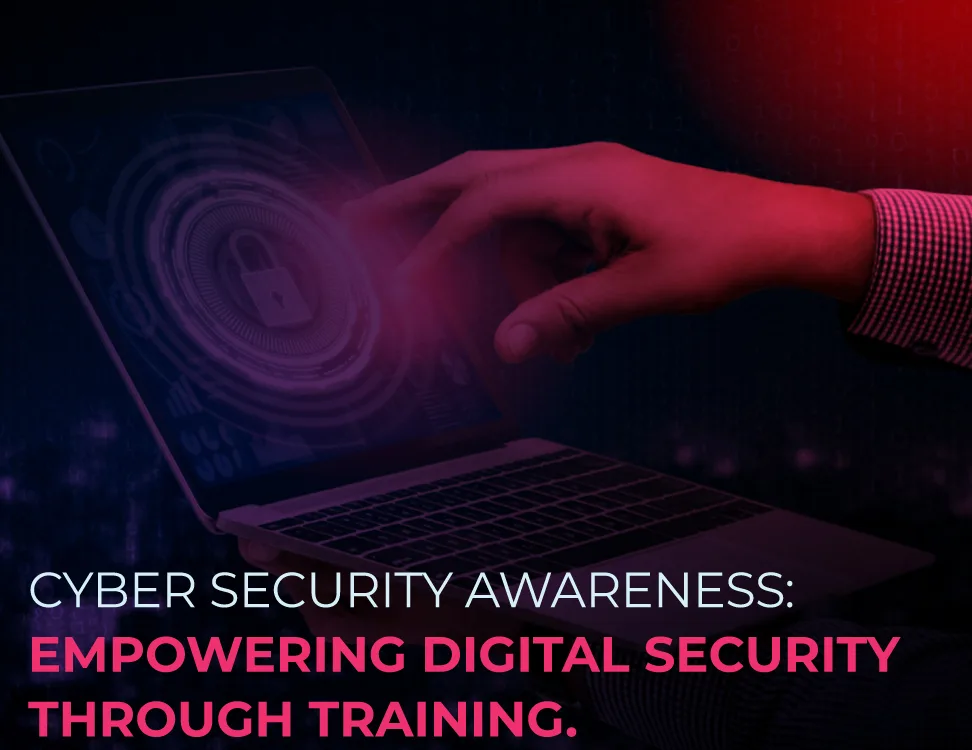
Cyber Security Awareness: Empowering Digital Security through Training.
In today’s interconnected world, data has become one of the most valuable assets to organizations. However, this asset can sometimes be a double-edged sword in case it is exfiltrated and falls into the wrong hands. From sophisticated hacking attempts to employee errors, the landscape of cyber risks is constantly evolving. One of the most potent shields against these threats is not just advanced software or firewalls; it’s an informed and vigilant workforce. Cybersecurity awareness and comprehensive training empower individuals to become the first line of defense against digital threats.
Importance of Cyber Security Awareness
Cybersecurity awareness goes beyond recognizing a phishing email or setting a strong password. It’s about cultivating a culture of security-conscious behavior at every level of an organization. When employees understand the risks and their roles in safeguarding sensitive data, they become proactive defenders of data integrity.
Key Elements of Effective Cybersecurity Training
- Threat Education: Training programs should educate employees about the different types of cyber threats, including phishing, malware, social engineering, and insider threats. Real-life examples and simulations can vividly illustrate the consequences of security breaches.
- Best Practices: Empower individuals with best practices, such as using strong passwords, enabling multi-factor authentication, regular software updates, and safe internet browsing habits.
- Data Handling Protocols: Educate staff on proper data handling, including the classification of sensitive information, encryption, and secure data storage practices.
- Incident Response Training: Prepare employees to recognize and respond to security incidents promptly. This includes knowing whom to contact, reporting procedures, and steps to contain potential breaches.
- Role-Specific Training: Tailor training to specific roles within the organization. For instance, IT staff might require more in-depth technical training, while non-technical employees may benefit from basic cybersecurity hygiene.
Benefits of Cybersecurity Training

Cyber Security awareness to tackle insider threats
Insider threats, originating from within an organization, represent a complex and often overlooked cybersecurity challenge. Cybersecurity awareness tailored to address those threats is crucial in fostering a culture of vigilance and empowerment.
An organization should teach its members to recognize insider threat indicators, the unusual behaviors that could lead to an incident in the organization, and how to report.
What Should Be Trained?
According to the Cybersecurity and Infrastructure Security Agency, a successful training program should include the following topics:
- Insider Threat Awareness Training that defines the distinct types of insider threats and describes the motivations and possible behaviors associated with each type.
- Insider Threat Reporting Training that instructs the organization’s policy on how to confidentially report suspected or concerning activity.
- Physical and Information Security Training that defines how to protect oneself, one’s personal information, and information entrusted by the organization.
- Employee or Member Security Policy Awareness Training that effectively communicates an organization’s acceptable use policies and the intent to pursue and prosecute crimes against employees or members who violate those policies.
- Classification Policy Training that covers the proper handling of sensitive and/or classified documentation and items.
- Agreements Training that covers the requirement for all employees, members, contractors, and other trusted insiders to sign acceptable use policy, non-compete, non-disclosure, and non-solicitation agreements as well as the content of these agreements.
Cybersecurity awareness and training are key to fortifying an organization’s defense against the ever-evolving cyber threat landscape. By investing in comprehensive and ongoing cyber training programs, companies not only strengthen their security measures but also empower their workforce to become vigilant guardians of digital assets.








